Say “monarch” and people immediately picture a beautiful butterfly floating through the yard. But there’s more to its life story than that!
* Monarchs mating and laying eggs (this page)
* The caterpillar grows
* The adult butterfly emerges from its chrysalis
No matter how many times we’ve watched this whole process — eggs, caterpillars (the larva stage), chrysalises (the pupa stage), and finally adult butterflies (technically, called the “imago” stage) — it remains fascinating.
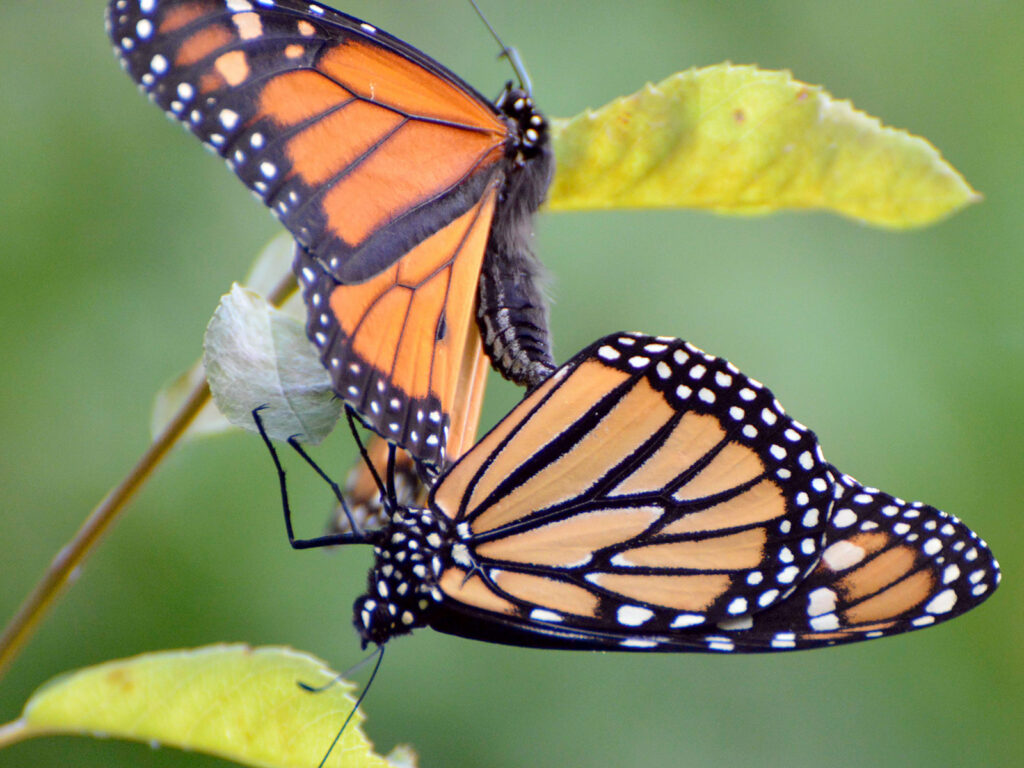
We were fortunate to see these two mating. They flew around the yard for hours, the female dangling from the male. The male is the top one.
Note that these are mating, not laying eggs. They lay eggs only on milkweed.
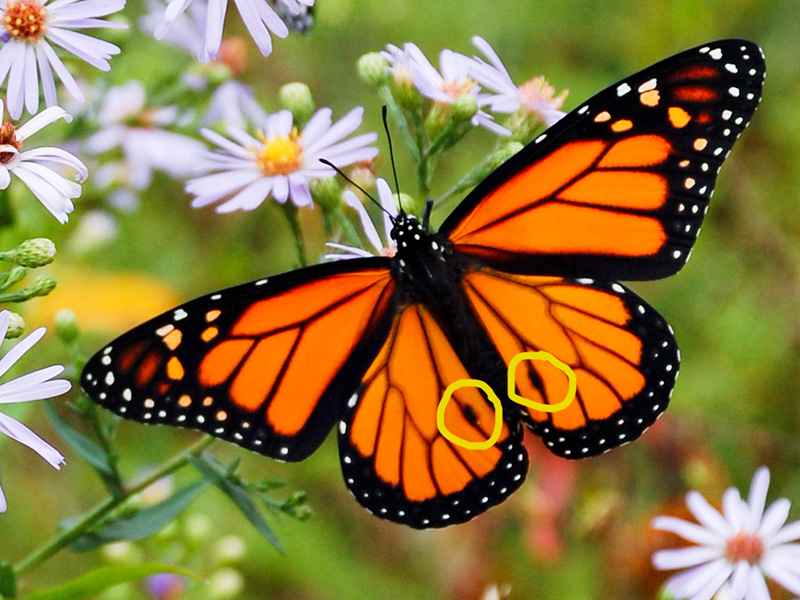

How did I know which one was the male? I saw the scent gland — the small black raised pouch in the middle of the photo. It’s an easy way to tell the male from the female.
Another clue is that the female has wider, darker veins on her wings.
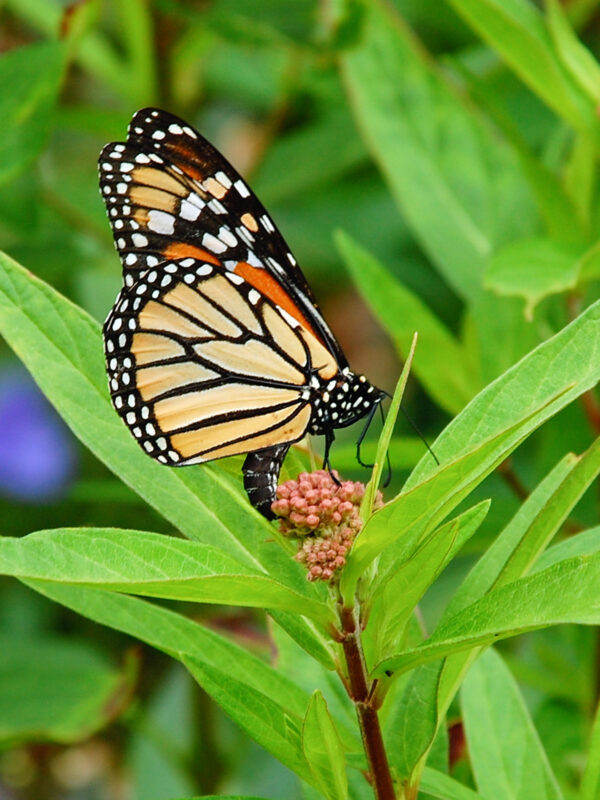
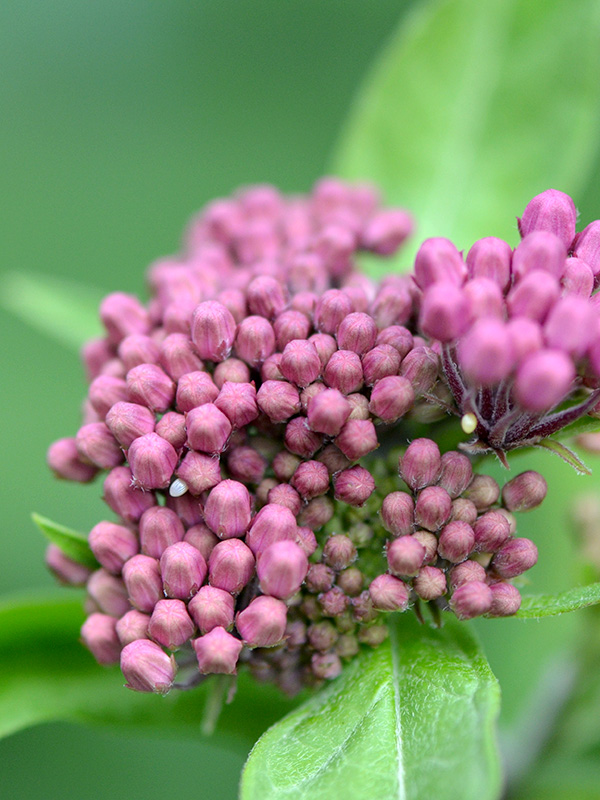
Now that they have mated, the female will lay her eggs, but ONLY on milkweed, since it’s the only food the caterpillars can eat. (Unless they’re fooled by the non-native swallowworts.) So we grow lots of milkweed plants. Lack of milkweed in the monarch breeding areas is one of the primary reasons for the decline of the monarch butterfly population.
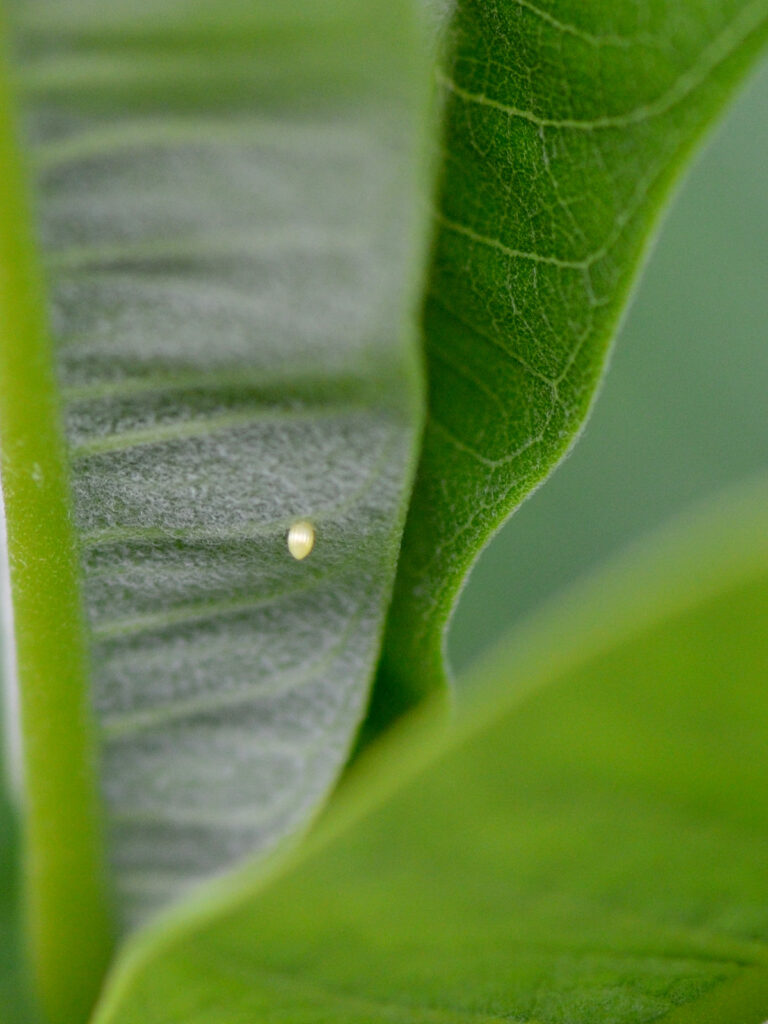
When we first started looking for monarch eggs, it was confusing. We didn’t know how big the eggs were, and milkweeds often have little spots of latex (the “milk” in milkweed) that to the untrained eye might look like eggs.
After a while, though, these ridged, ivory-colored, oval-shaped eggs seemed very distinctive and easy to distinguish from the pure white, rounder drops of latex.
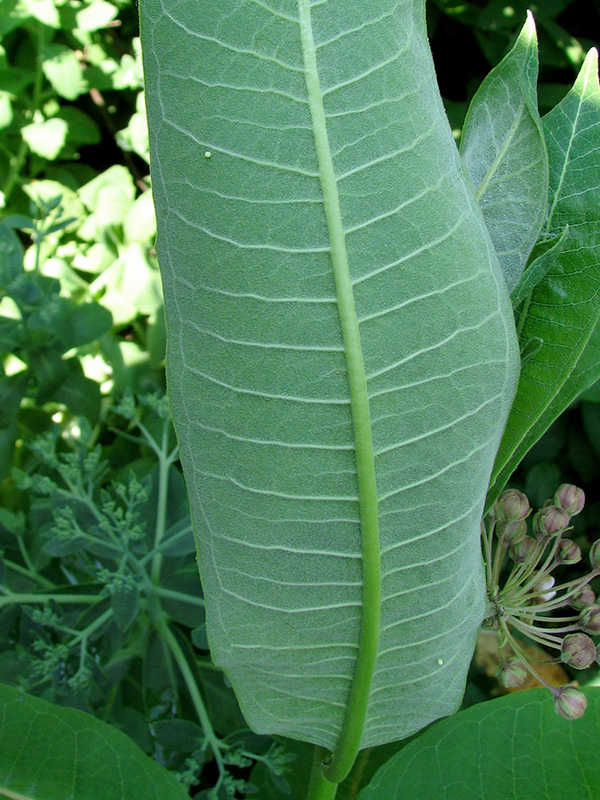
They often lay their eggs on the underside of the leaf and generally only one on the leaf.
This is an exception since we spotted two eggs on the underside of this common milkweed leaf.

I suspect they usually lay only egg on a leaf since when they hatch, they eat their eggshell. Nothing goes to waste in nature!
If there were more than an egg in the newly-hatched caterpillar’s range, they might eat their unhatched sibling!
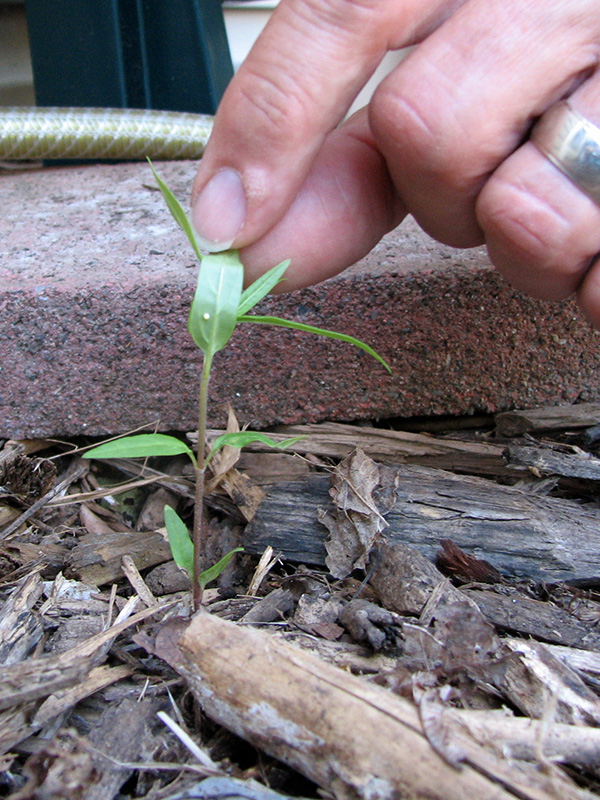
We were surprised to see a monarch laying an egg on this very small milkweed plant. I later put bricks around the plant to protect it since it was in our path. I soon discovered that it wasn’t unusual at all.
Perhaps they prefer the tender leaves of young plants and assume that the plant will grow faster than the caterpillar can eat it. Since this was the only milkweed within a baby caterpillar’s traveling distance, though, it seems like a risky strategy. Having isolated small milkweeds such as this, though, are probably rare in nature — or at least in nature as it used to be.
In 2021, Budburst, a plant phenology project, created a special subproject that studies exactly this question — whether monarchs prefer these small milkweeds. (See Resources below.)
Egg to caterpillar
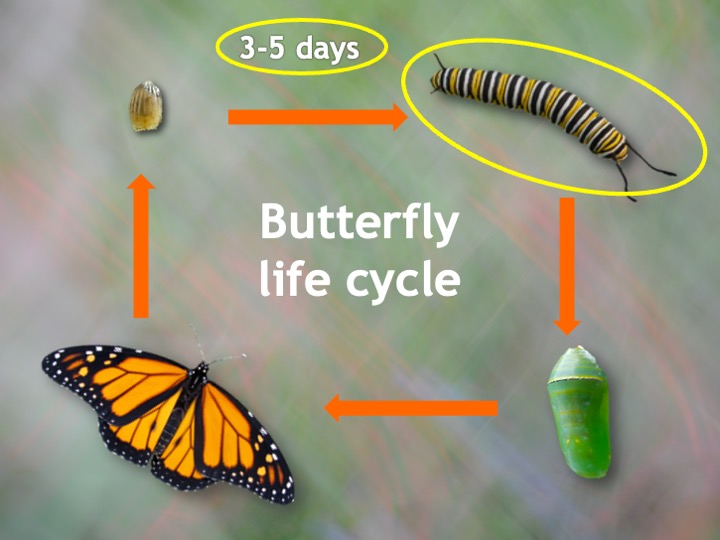
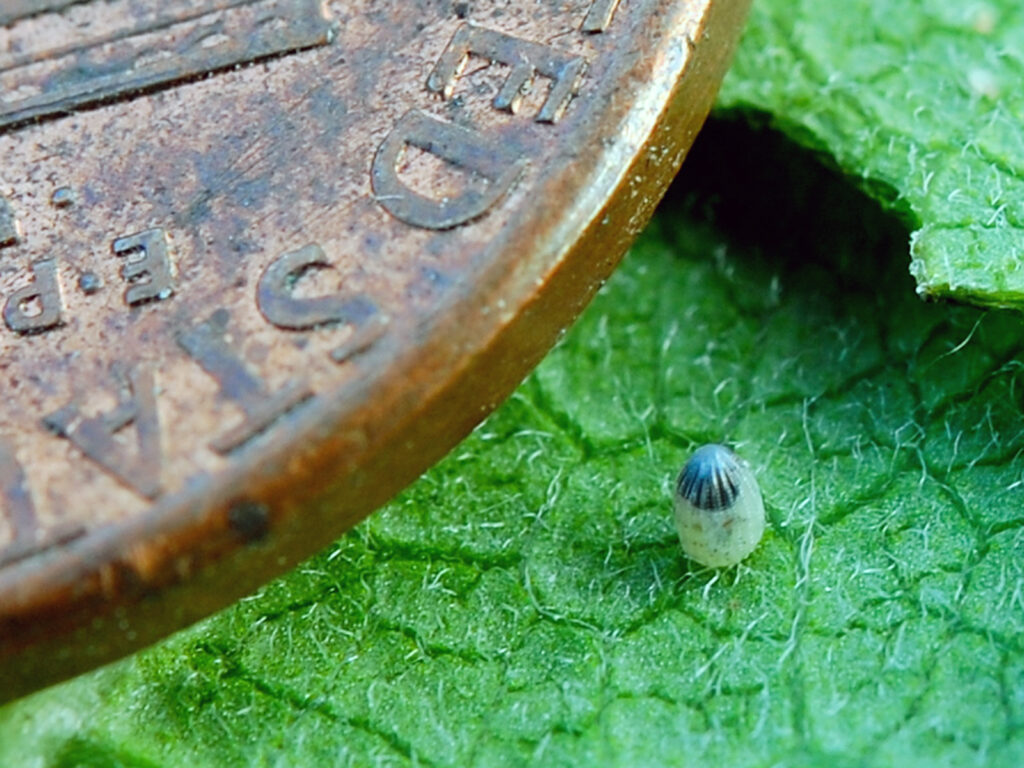
After just a few days, the top becomes black. This is the future caterpillar’s glossy black head. This is a sign the egg will soon hatch!
The edge of the penny in the image gives an idea of how tiny it is.
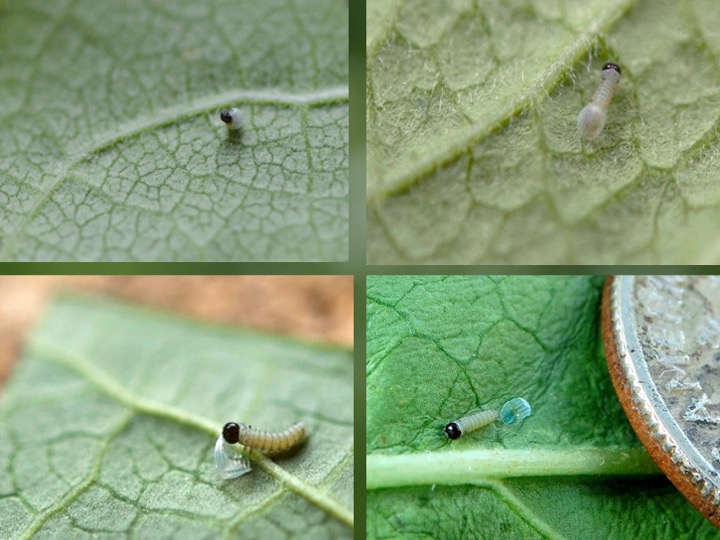
Resources
- Ba Rea:
- VIDEO: Monarch life cycle and migration – 10-min video Put together by Ba Rea, the author of the excellent guide book Milkweed, Monarchs and More: A Field Guide to the Invertebrate Community in the Milkweed Patch
- Project Budburst:
- Do monarch butterflies prefer to lay eggs on flowering or non-flowering stems? – Join Budburst and help answer this question!
Reflections
For if one link in nature’s chain might be lost, another might be lost, until the whole of things will vanish by piecemeal.
~ U.S. President Thomas Jefferson
Our task must be to … embrace all living creatures and the whole of nature and its beauty.
~ Albert Einstein
